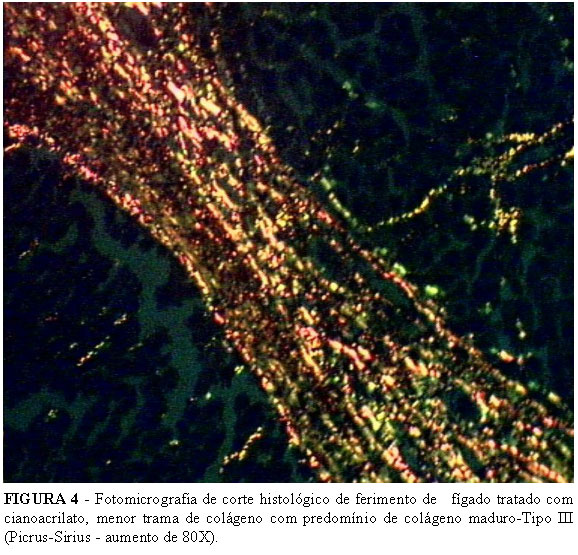PURPOSE: To determinate the role of cianoacrilate and fibrin glue in the repair of the hepatic wound, to evidence the hemostatic capacity of the adhesives and their respective integration to the hepatic tissue. METHODS: 30 rats Wistar-EPM1 were separate in 2 groups and submitted to the anesthesia with tiopental in the concentration of 40mg/kg EV. Laparotomy was made with exhibition of the liver. A punch of 3mm was made in the hepatic right lobe. The animals of group A were treated with the placement of fibrin glue in the wounds, the animals of group B had the wounds treated with cianoacrilate. In the 7th of post-operative period, under anesthesia, the animals suffered the resection of the right hepatic lobe and samples were collected for the histology study procedures (HE and Picro-Sirius). They were appraised for optical microscopy, the inflammatory response (qualitative criteria of the neutrofiles presence, giants cells, granuloma, neovascularization) and for polarization microscopy, the quantification of collagen (I-young Type and III-matureType). RESULTS: The two adhesives had hemostatic effects in similar times.The wounds treated with fibrin glue showed larger amount of young and mature collagen and a larger amount of neovascularization, while the wounds treated with cianoacrilate showed larger reaction of granuloma. CONCLUSION: Fibrin glue and cianoacrilate have similar hemostatic effects.The wound treated with fibrin glue present larger neovascularization and larger percentage of collagen type I and type III showing tendency to a better tissue repair without formation of granuloma.
Hemostasis; Fibrin tissue adhesive; Liver






